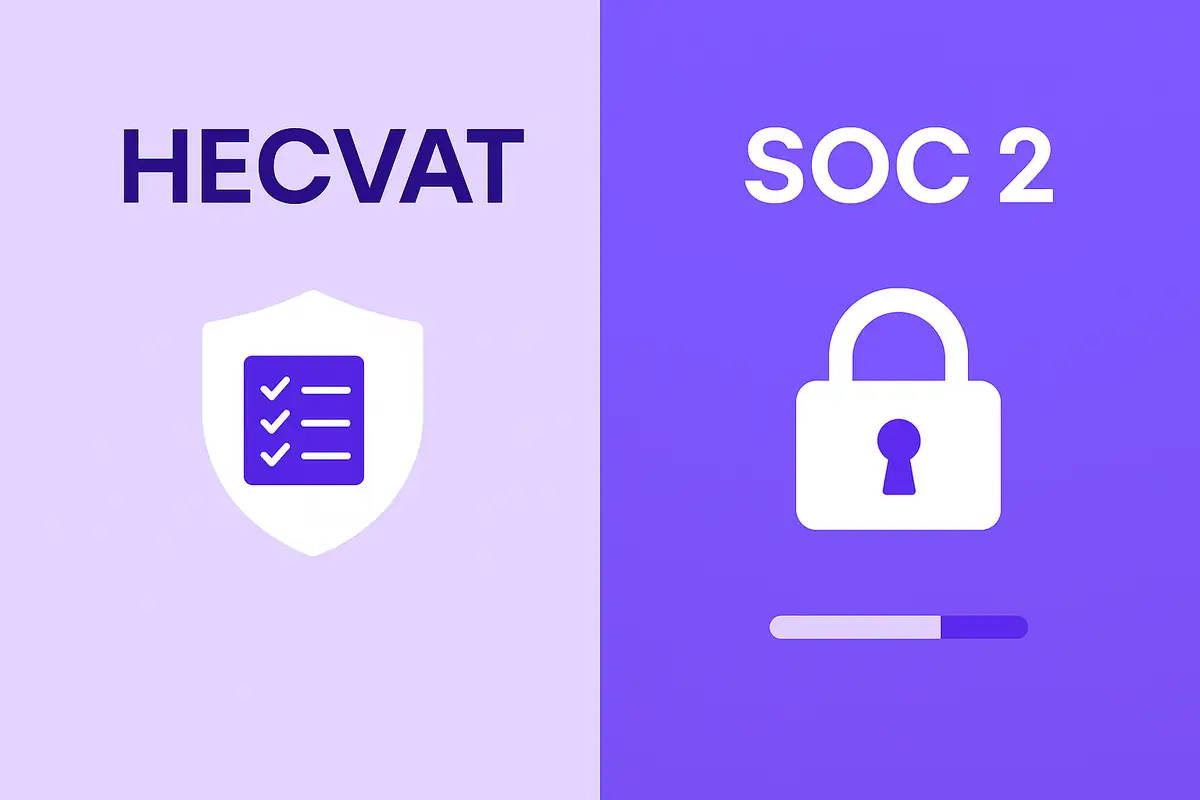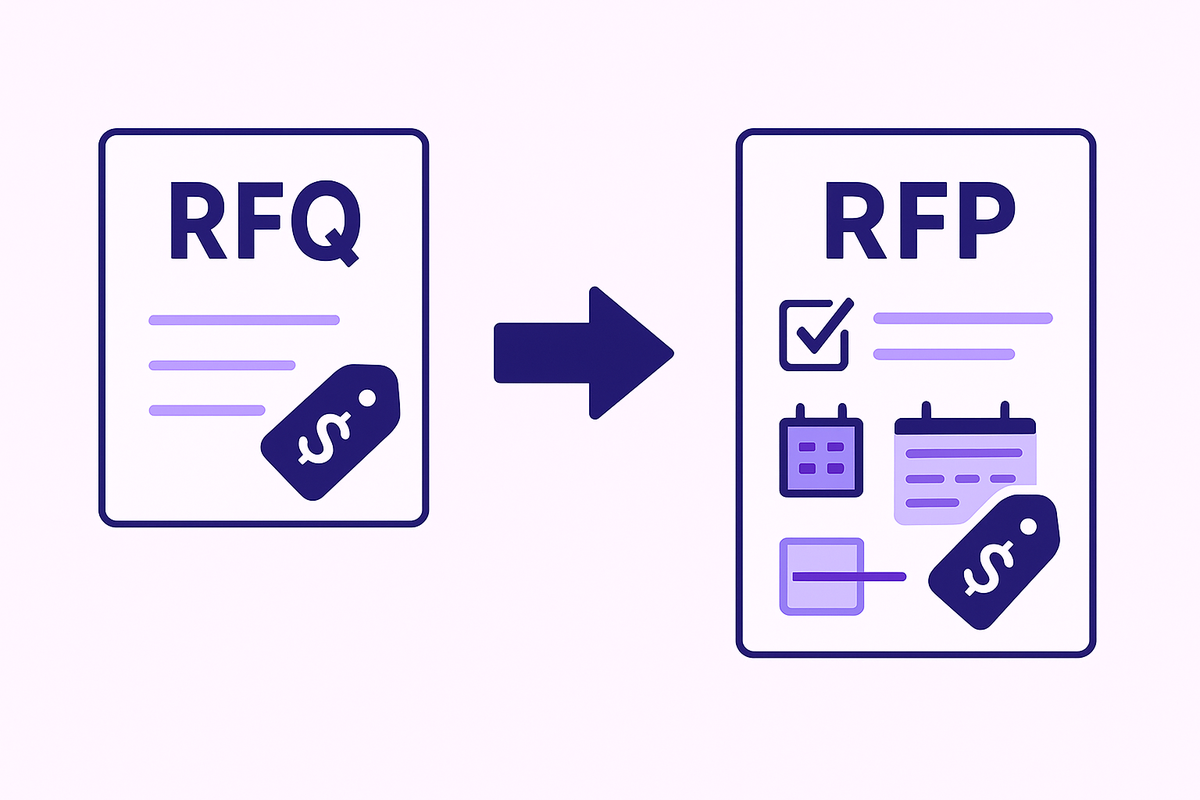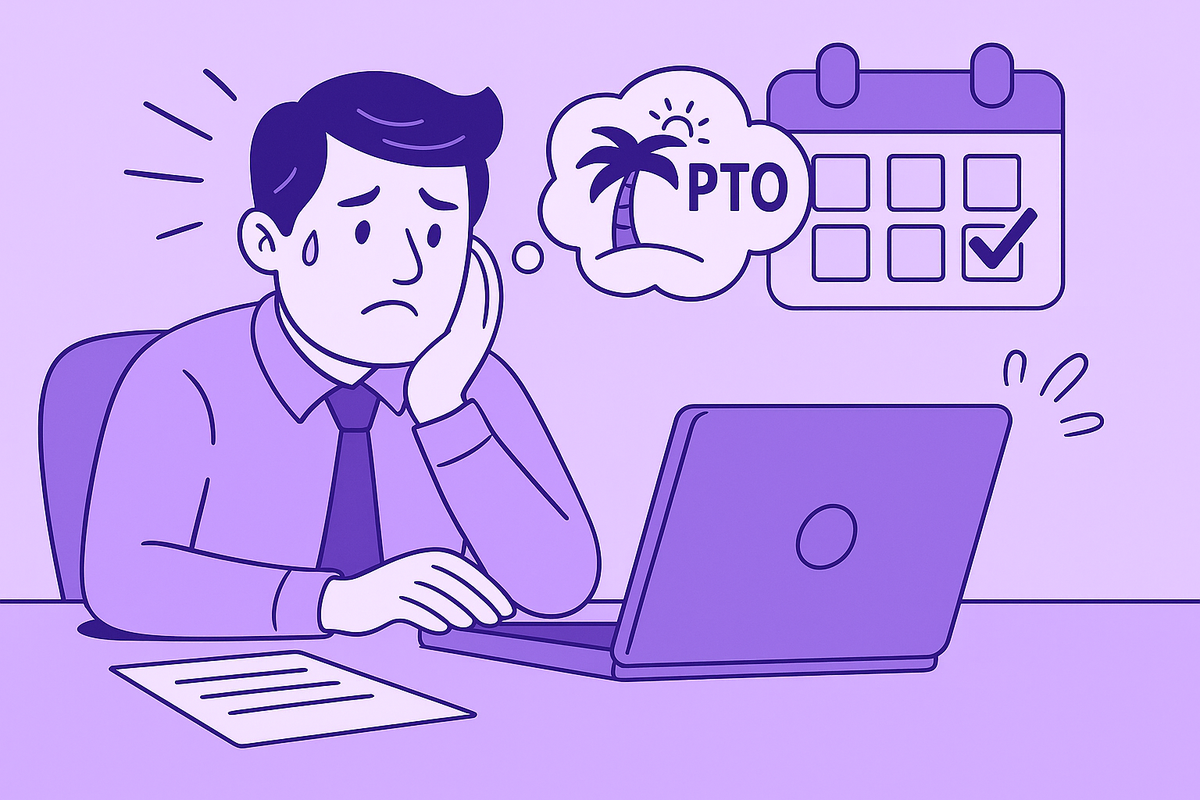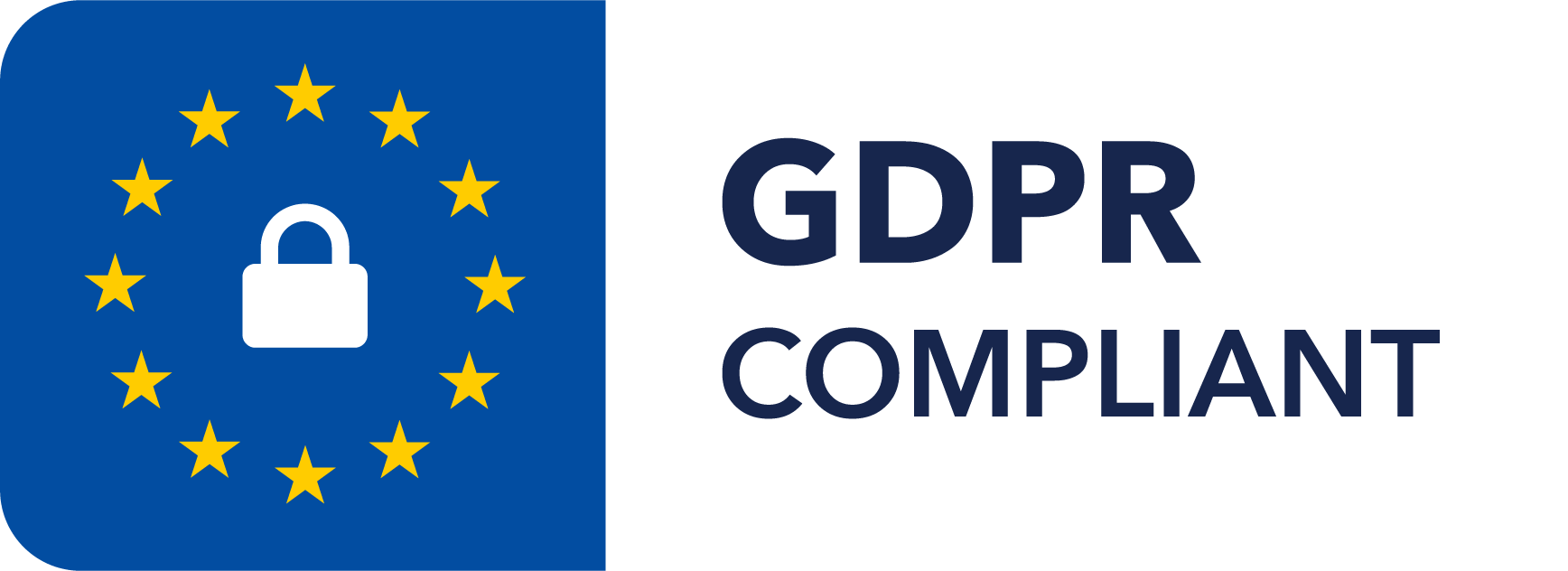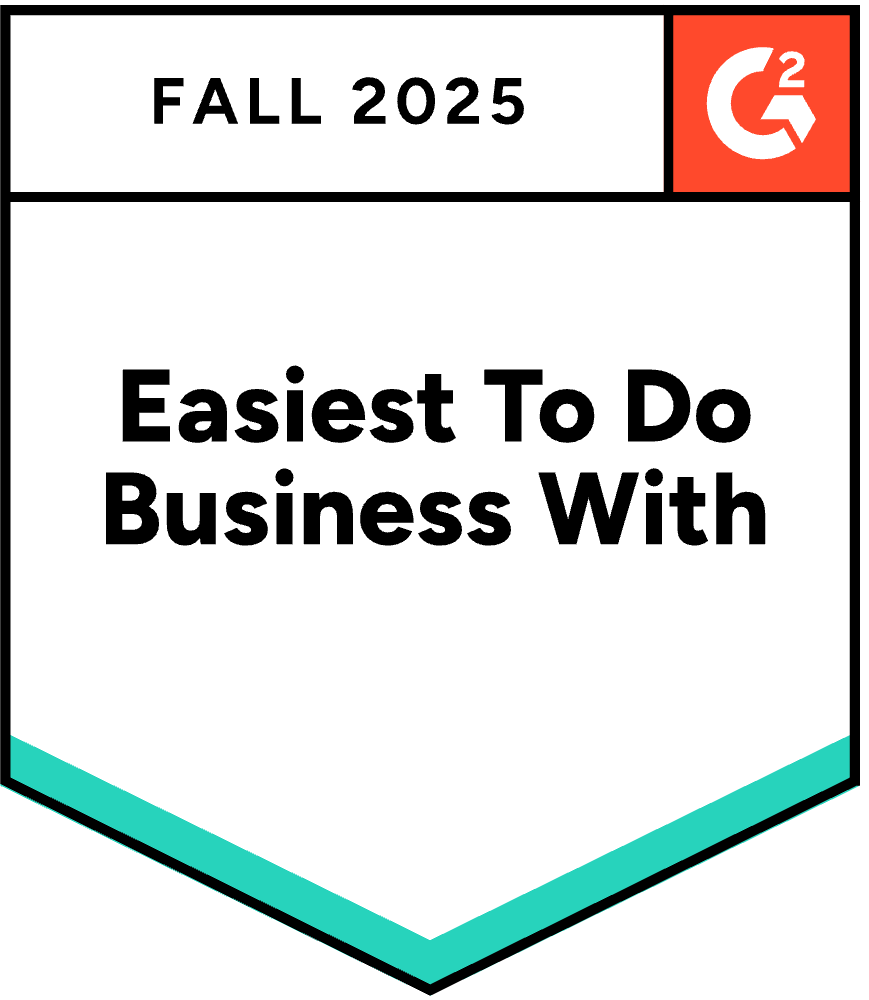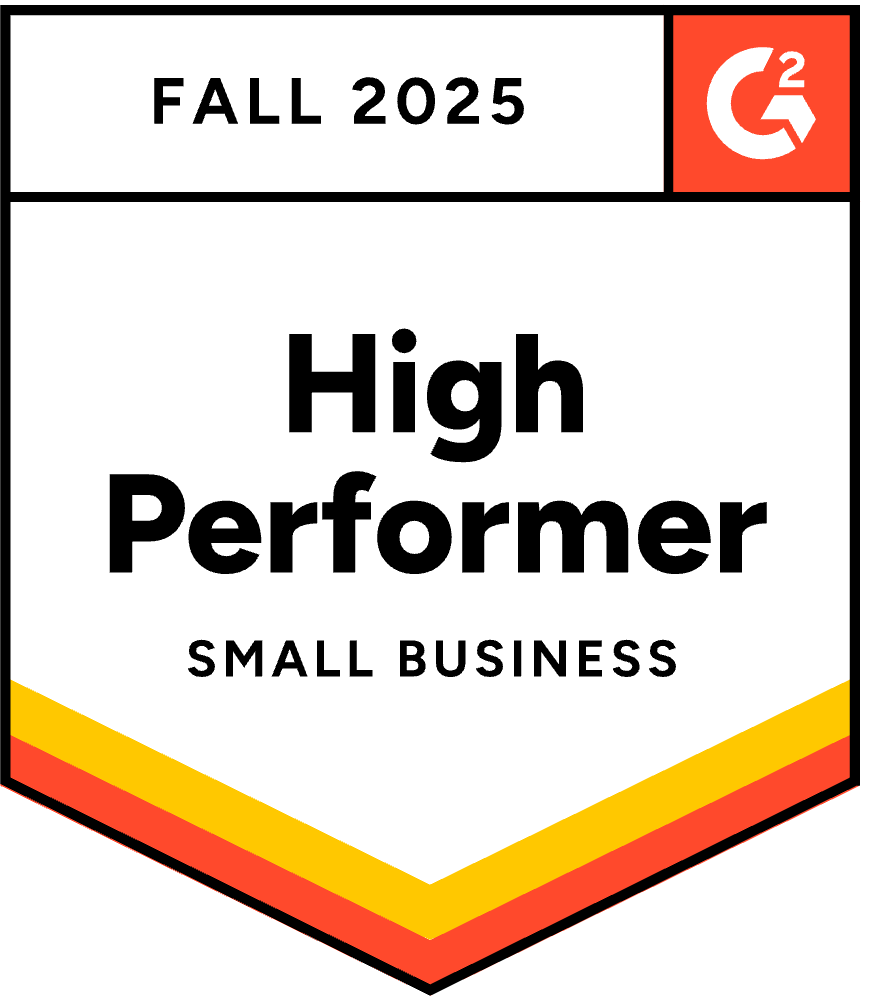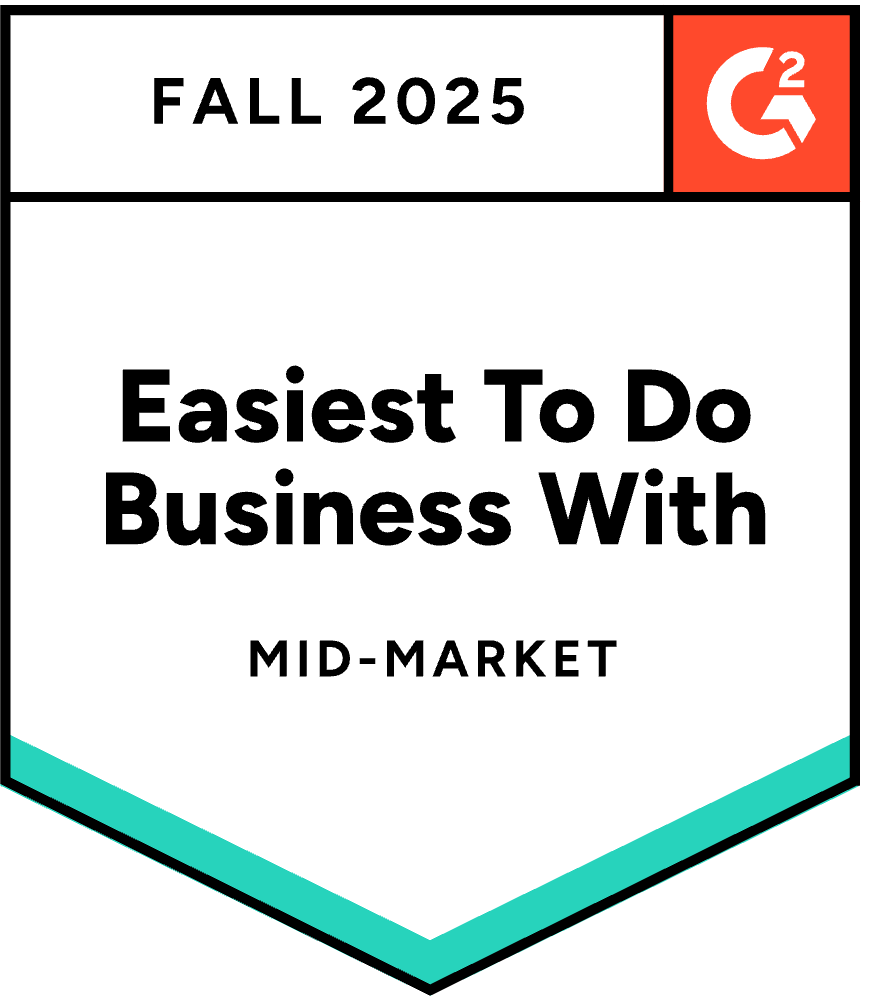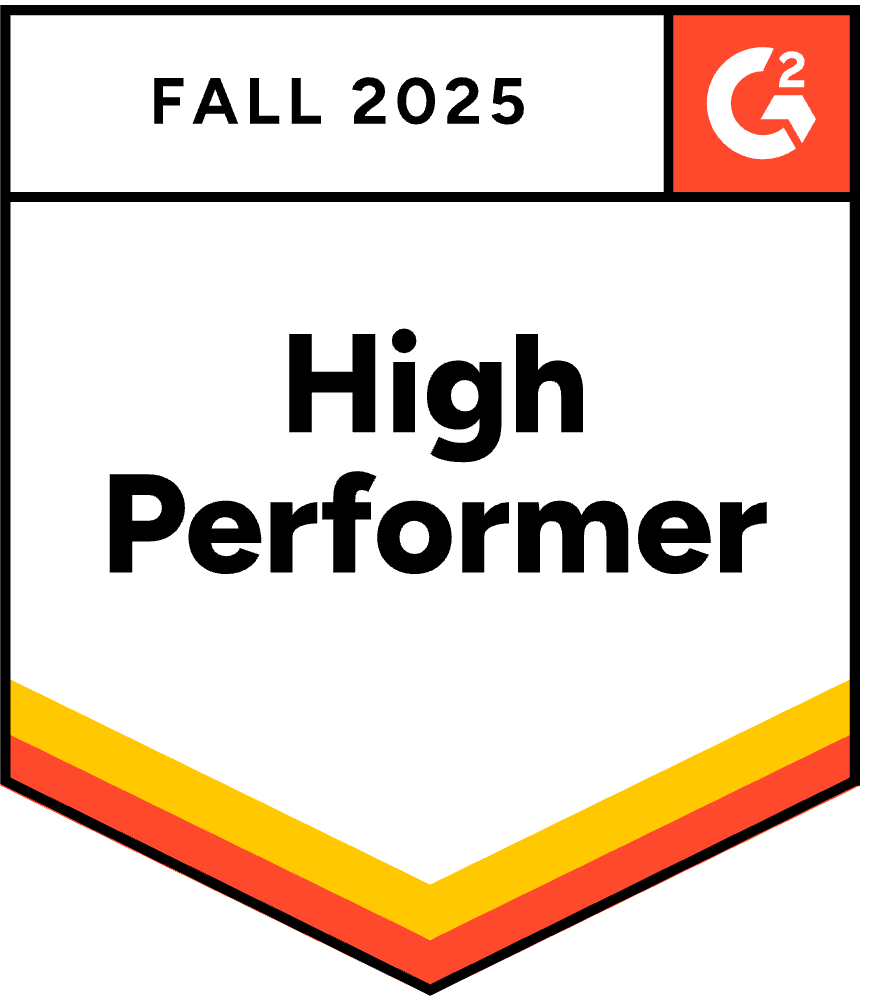9 Best Wealth Management Proposal Software Tools
August 14, 2025
By
Evie Secilmis

Your proposal is often the first real look a potential client gets at your expertise. But creating one can feel like a high-stakes assembly project. You pull data from your CRM, grab analytics, and manually piece it all together, hoping it’s error-free. This process isn't just slow—it's risky. The right wealth management proposal software acts as your quality control. Modern financial advisor proposal generation software transforms this tedious task into a streamlined workflow, giving you a powerful head start on creating sophisticated, client-focused proposals that win business and build trust from the start.
Key Takeaways
- Let Automation Handle the Grunt Work: The right software automates data gathering and draft creation, freeing you to focus on what clients value most: your strategic advice and personal attention. It’s about using technology to scale your high-touch approach, not replace it.
- Demand Seamless Integration: Your proposal software shouldn't be an island. Prioritize a platform that connects directly with your CRM and portfolio management tools to ensure data accuracy, eliminate manual entry, and create a smooth workflow from start to finish.
- Measure Success with Win Rates and Engagement: Go beyond time saved and look at the metrics that drive growth. Tracking your proposal win rate and analyzing how clients interact with your documents gives you direct feedback to refine your strategy and close more deals.
What is Wealth Management Proposal Software?
At its core, financial advisor proposal software is a tool designed to help you create sophisticated, client-focused proposals quickly and easily. Instead of piecing together documents from scratch in Word or wrestling with spreadsheets, this software gives you a streamlined way to present your strategies. It pulls all the necessary information into one place, helping you build a compelling case for why a potential client should work with you. Think of it as your central hub for generating professional, personalized, and persuasive proposals that reflect the quality of your advice.
What Can It Do for Your Practice?
The main job of proposal software is to streamline the entire process of creating detailed client acquisition proposals. It automates many of the tedious, manual steps, freeing you up to focus on high-value work like strategy and client relationships. The right platform helps you maintain consistency in your branding and messaging across every proposal you send. More importantly, it ensures you remain compliant with industry regulations by using pre-approved templates and content blocks. This combination of speed, consistency, and compliance helps you achieve the goal of winning more business without getting bogged down in administrative tasks.
Using AI to Create Winning Proposals Faster
This is where things get really interesting. Modern proposal software uses AI to do the heavy lifting of personalization for you. Instead of you manually digging through notes and different systems, an AI-powered platform can automatically pull in client details, risk profiles, and existing portfolio data from your connected tools. It then intelligently maps this information to your firm’s investment models and solutions to generate a tailored proposal. This means the first draft you see is already highly personalized and relevant to that specific client’s needs. It’s a massive leap from generic templates, allowing you to deliver a truly bespoke experience at scale.
Does It Integrate with Your Tech Stack?
If you’re worried about adding yet another disconnected tool to your workflow, you’re not alone. In fact, over half of advisors point to a lack of integration between their core applications as a major technology headache. The best proposal generation software is built to solve this problem, not add to it. It connects seamlessly with the CRM, financial planning, and portfolio management systems you already rely on. This integration creates a smooth flow of data, ensuring your proposals are always built on accurate, up-to-date information without requiring manual data entry. This not only saves time but also reduces the risk of embarrassing and costly errors.
The Top Proposal Software for Financial Advisors
Choosing the right proposal software can feel like a big decision, but it’s all about finding the tool that fits your firm’s unique workflow and client base. Some platforms are all-in-one wealth management giants, while others are specialized tools designed to do one thing exceptionally well: create winning proposals. The good news is that there are fantastic options out there, whether you’re a solo advisor building your practice or part of a large enterprise team.
The key is to look past the marketing and focus on what will actually make your life easier and your proposals more effective. Do you need deep integration with a specific CRM? Are you responding to complex institutional RFPs or creating straightforward investment plans for individual clients? As you explore these options, think about your current process and where the biggest bottlenecks are. The right software won't just speed things up; it will help you present your value more clearly and consistently, giving you a solid advantage in winning and retaining clients. Let's look at some of the top contenders in the space.
HeyIris.ai
If your firm frequently responds to detailed RFPs, RFIs, or due diligence questionnaires (DDQs), HeyIris.ai is a game-changer. While many tools focus on standard investment proposals, Iris uses a powerful AI engine to tackle the most complex documents with speed and precision. It acts as a central knowledge hub, ensuring every proposal uses the most current, accurate, and compliant information. The AI deal desk proactively flags outdated content across your systems, which is critical for maintaining compliance. For advisors aiming to win larger, more sophisticated accounts, Iris streamlines the entire response process, cutting down draft time from days to minutes and helping your team produce consistently high-quality proposals that stand out.
Orion Proposals
Orion is a well-known name in the advisor tech space, and its proposal tool is built to match that reputation. It’s designed specifically to help you create investment proposals that are not only visually appealing but also incredibly clear and easy for clients to understand. The focus here is on enhancing the client experience from the very first interaction. By simplifying complex financial information into a clean, professional format, Orion Proposals helps you build trust and demonstrate your value effectively. If your primary goal is to present investment strategies in a straightforward and compelling way, this tool is a strong contender that integrates smoothly into the broader Orion ecosystem.
Zephyr
For financial professionals who believe trust is the cornerstone of every client relationship, Zephyr’s software is designed with that principle in mind. The platform simplifies the process of creating investment proposals, emphasizing ease, speed, and accuracy. By removing friction from the proposal generation process, Zephyr allows you to focus more on the client and less on the paperwork. It helps you foster better client relationships by ensuring the proposals you deliver are not only professional but also consistently accurate. This reliability helps build confidence and reinforces your position as a trusted advisor from the very beginning of the engagement.
Side-by-Side Investment Comparison
One of the most effective ways to demonstrate your value is to show a clear, direct comparison between a client's current investments and your proposed strategy. Instead of just talking about potential returns, this approach makes your recommendations tangible and easy to grasp. Platforms like CapIntel are built to do exactly this, helping you create simple, visual comparisons that make complex financial products understandable for clients. By placing the two options side-by-side, you help clients see precisely how your plan better aligns with their long-term goals. This clarity removes ambiguity and builds the confidence they need to move forward with your advice.
Personalized Portfolio Building
Beyond a simple comparison, the most compelling proposals show that you understand the client's unique financial situation. This is where personalized portfolio building comes in. Modern tools use smart technology and deep analysis to help you craft a strategy that is truly bespoke. For example, a platform like VRGL is designed to help advisors use data to build trust and create highly tailored investment proposals. This level of personalization shows clients you’ve done your homework and are offering a solution designed specifically for them, not just a generic model. It’s a powerful way to build stronger relationships from day one.
Envestnet
Envestnet is a comprehensive wealth management platform, and its proposal generation capabilities are a core part of its unified system. For firms already using Envestnet for portfolio management, reporting, and billing, its proposal tool offers seamless integration. This means you can pull client data, model portfolios, and generate proposals without ever leaving the ecosystem. The strength of Envestnet lies in its all-in-one nature, providing a consistent experience for both the advisor and the client. It’s an ideal choice for enterprise firms that need a powerful, integrated solution to manage the entire client lifecycle, from initial proposal to ongoing management and reporting.
AdvisorEngine
AdvisorEngine is best known for its client relationship management (CRM) and digital client portal, and its proposal software is a natural extension of that focus. The platform helps you create clean, modern, and branded proposals that tie directly into your client management workflow. This integration ensures a smooth transition from prospect to client, as all the data captured during the proposal stage flows directly into the client’s profile. For advisors who want to deliver a sleek, tech-forward client experience from start to finish, AdvisorEngine provides a cohesive system that makes both proposal generation and ongoing client communication feel effortless and professional.
Morningstar Advisor Workstation
Leveraging the power of Morningstar’s renowned data and research, the Advisor Workstation is a powerhouse for analytics-driven proposals. This tool is perfect for advisors who want to ground their recommendations in deep market insights and institutional-grade analytics. You can create highly detailed, customized proposals that showcase your investment philosophy with compelling charts, reports, and data visualizations. For clients who appreciate a thorough, evidence-based approach, a proposal generated with Morningstar’s tools can be incredibly persuasive. It’s an excellent choice for advisors who want to differentiate themselves through sophisticated investment analysis and research.
RightCapital
RightCapital is another top-tier financial planning software that offers robust proposal generation features. Often praised for its modern interface and user-friendly design, it helps advisors create dynamic and interactive financial plans that double as compelling proposals. RightCapital makes it easy to illustrate the impact of your recommendations through visual, easy-to-understand projections. This is especially useful for showing clients the potential long-term outcomes of their decisions. For advisors who want a powerful yet intuitive planning tool that can produce client-friendly proposals, RightCapital is a leading choice that excels at making complex financial concepts accessible.
VRGL
VRGL is built for advisors who want to get straight to the point and win new clients faster. It uses AI-powered analytics to give you an objective look at a prospect's current portfolio, helping you build a data-driven case for your strategy. The platform is designed to accelerate the client acquisition process by quickly generating deep insights that form the foundation of a compelling investment proposal. It’s a great fit if your approach is heavily analytical and you want to demonstrate your value with hard numbers from the very first meeting. This tool cuts through the noise, focusing on clear, quantitative analysis to show prospects exactly where they stand and how you can help them improve.
5 Pillar Analytics Feature
The standout feature of VRGL is its 5 Pillar Analytics. This tool automatically analyzes a prospect's investments across five critical areas: performance, risk, diversification, taxes, and fees. Instead of you spending hours crunching the numbers, VRGL presents a clear, comprehensive report that highlights opportunities for improvement. This allows you to walk into a meeting with a concrete, evidence-based plan, showing a potential client exactly how your management can improve their portfolio and financial outcomes. It’s a powerful way to build trust and credibility instantly by replacing subjective claims with objective data, making your recommendations feel both insightful and undeniable.
CapIntel
CapIntel is designed for advisors who believe that a great proposal is one that the client truly understands. The platform focuses on transforming complex investment comparisons into clear, interactive, and visually engaging presentations. If you often find clients getting lost in the numbers, CapIntel helps you tell a more compelling story. It simplifies the proposal creation process into a few straightforward steps, allowing you to build attractive, customized proposals that clearly communicate your expertise and recommendations. This approach helps you connect with clients on their terms, without overwhelming them with dense financial jargon, making your value proposition much easier to grasp.
Interactive Visuals for Client Proposals
Where CapIntel really shines is in its use of interactive visuals. The platform helps you move beyond static charts and dense tables by creating dynamic proposals that clients can engage with. This visual approach makes it easier for clients to grasp their current investment situation and see the potential impact of your proposed strategy. By presenting information in a more intuitive format, you can have more productive conversations, answer questions more effectively, and help clients feel more confident and informed in their decision-making process. It turns a one-way presentation into a collaborative discussion, which is key for building a strong, lasting relationship.
Choosing Your Software: Must-Have Features
Choosing the right proposal software is about finding a tool that fits into your workflow and actively helps you win more business. The best platforms aren't just digital filing cabinets; they are active partners in your growth. As you compare options, look for these essential features that separate the truly great tools from the merely good ones.
Automate Your Content Creation
The most time-consuming part of building a proposal is often gathering the right information and tailoring it to each client. Modern proposal software uses AI to do this heavy lifting for you. The system can pull in client details, analyze risk profiles, and draw from your existing data to generate a personalized first draft in minutes, not hours. This automation frees you up to focus on high-level strategy and building client relationships instead of getting stuck on administrative tasks. An AI-powered platform should give you a massive head start, letting you respond to opportunities faster than your competition.
Customize and Brand Your Proposals
Your proposal is a direct reflection of your brand. A generic, poorly formatted document can undermine a client's confidence before they even read the details. Your software should make it simple to create sophisticated, professional proposals that are perfectly branded. Look for tools that allow you to easily add your logo, apply your brand colors, and use your specific fonts. You shouldn't need a graphic designer to produce a document that looks polished and reinforces your firm's identity. This consistency builds trust and shows clients you pay attention to every detail.
Stay Compliant with Built-in Checks
In the financial industry, compliance isn't optional. A single misstep can put your firm at risk. The right proposal software acts as a critical safety net by helping you remain regulatory compliant. Look for features that automatically flag non-compliant language, outdated disclosures, or unapproved product mentions. This automates a crucial part of your review process, reducing the chance of human error and giving you peace of mind. It ensures that every proposal you send is not only persuasive but also fully compliant with industry standards.
Track Performance with Clear Reporting
How do you know if your proposals are actually working? The best software gives you clear data on proposal performance. Instead of sending a document into the void, you can track when a client opens it, how much time they spend on each section, and what content they engage with the most. These analytics are invaluable. They provide direct feedback on what resonates with clients, helping you refine your approach over time. By understanding client behavior, you can make data-driven adjustments to your templates and strategies to improve your win rate.
Offer a Seamless Client Experience
The client experience shouldn't feel disjointed. A great proposal tool often includes a secure, professional client portal where you can present your proposal. This creates a single, seamless space for communication. An integrated portal allows you to pull in existing client account information and display data like current asset allocation, making the proposal feel deeply personalized and relevant. It shows clients that you have a complete picture of their financial situation and provides them with a modern, interactive experience that sets you apart from advisors who still rely on static email attachments.
Built-in Risk Assessment Tools
Accurately gauging a client's risk tolerance is fundamental to financial advising. Top-tier software often includes integrated risk assessment tools that help you align your proposal with a client's comfort level from the start. Some platforms use AI to create personalized portfolios that automatically factor in risk, allowing you to detect and manage potential issues before they ever become a problem. This feature demonstrates a sophisticated, data-driven approach and helps you build a plan that a client can confidently buy into.
Connect Your Data Sources Easily
Few things are more frustrating than technology that doesn't work together. In fact, studies show a lack of integration between core applications is a major pain point for advisors. Manually copying and pasting information from your CRM to your proposal tool is inefficient and invites errors. Look for software that offers smooth data integration with the systems you already use, like your CRM and portfolio management software. This ensures your data is always accurate and consistent across all platforms, saving you time and eliminating the risk of embarrassing mistakes.
Create Engaging, Interactive Proposals
A static PDF is easy to ignore. An interactive proposal, on the other hand, invites engagement. Modern software allows you to include dynamic elements like interactive charts, risk tolerance sliders, or embedded videos that turn your proposal into a two-way conversation. These features empower clients to explore different scenarios and feel more involved in the planning process. When a client can actively engage with their financial plan, they are more likely to understand its value and feel confident moving forward with you as their advisor.
The Role of CRM in Your Workflow
While proposal software is your engine for winning new business, your Customer Relationship Management (CRM) system is the chassis that holds your entire practice together. It’s the central source of truth for every client interaction, from the first handshake to the annual review. A well-integrated CRM doesn't just store contact information; it becomes an active part of your workflow, feeding crucial data into your proposals and helping you manage relationships at scale. Without a solid CRM foundation, even the best proposal software can’t perform at its peak, as you’ll be stuck manually hunting for the information needed to create a truly personalized plan.
What is a CRM for Financial Advisors?
Think of a CRM for financial advisors as a specialized digital filing cabinet built to manage your most valuable asset: your client relationships. This software is designed specifically for the needs of financial professionals, helping you keep a detailed record of every client's information, track communications, and manage your daily schedule. More than just a contact list, it’s a system that helps you stay organized and ensures you’re meeting all the necessary compliance and regulatory requirements. It’s the operational backbone that allows you to deliver consistent, high-quality service to every person you work with.
Key Benefits of Integrating a CRM
Integrating a CRM into your practice isn't just about better organization; it's about creating tangible business results. By centralizing your client data and automating routine processes, you unlock significant efficiencies and can focus on what truly matters. The two biggest advantages are the ability to deepen client relationships through proactive service and the freedom you gain by automating the administrative tasks that can consume your day. This combination allows you to scale your high-touch service model effectively.
Build Stronger Client Relationships
A good CRM is your secret weapon for client retention. It allows you to be proactive, not just reactive. By keeping detailed notes and setting reminders for follow-ups, you can anticipate client needs and maintain regular, meaningful contact. This consistent attention shows clients they are a priority, which is essential for building long-term trust and loyalty. When clients feel seen and valued, they are far more likely to stay with you, even during periods of market volatility. This proactive service is what separates a good advisor from a great one.
Automate Daily Tasks
Imagine how much time you could reclaim if you didn't have to manually send follow-up emails or chase down documents. A CRM with strong workflow automation can handle these routine tasks for you. It can automatically send reminders for upcoming meetings, prompt clients for necessary paperwork, and schedule follow-ups after a proposal is sent. This automation not only saves you hours of administrative work but also ensures that nothing falls through the cracks, allowing you to focus your energy on strategic planning and client conversations.
Top CRMs for Financial Advisors
The CRM market is full of options, but a few platforms have become favorites among financial advisors for their industry-specific features and ease of use. When choosing a CRM, it's important to find one that fits your firm's size, workflow, and integration needs. Here are a few of the most popular choices that consistently receive high marks from financial professionals for their ability to streamline operations and improve client management.
Salesforce Financial Services Cloud
Salesforce is a powerhouse in the CRM world, and its Financial Services Cloud is a robust, highly customizable platform built for wealth management. It’s known for its powerful AI capabilities and its ability to provide a complete 360-degree view of your clients. While it can be a significant investment, its scalability makes it a top choice for larger firms and those looking for a system that can grow with them and handle complex client relationships with precision.
Redtail CRM
Redtail is one of the most well-known CRMs in the financial advisory space, largely because of its user-friendly interface and affordable price point. It’s valued for being straightforward and easy to learn, making it a great option for independent advisors and smaller firms that need a reliable, no-fuss solution. Redtail offers all the core functionalities you need to manage client relationships effectively without an overwhelming number of features, making it a practical and popular choice.
Wealthbox
Wealthbox stands out with its modern, intuitive design that feels more like a social media platform than a traditional CRM. It’s built with teamwork in mind, making it easy for everyone in your firm to collaborate and stay on the same page. Wealthbox is praised for its simplicity and powerful integrations with other popular advisor tools. If you’re looking for a CRM that is easy to use from day one and promotes a collaborative work environment, Wealthbox is an excellent option.
Understanding the Client's Toolkit: Personal Finance Software
To create proposals that truly resonate, you need to understand your client's world, and that includes the tools they might be using to manage their own finances. Many tech-savvy clients are already using personal finance apps to track their spending, investments, and net worth. Knowing what these platforms do—and what they don't—can help you better position your value. You can show them how your strategic advice goes far beyond what an app can offer, filling in the gaps and providing a level of personalized guidance that software alone can't match.
Boldin (formerly NewRetirement)
Clients using Boldin are likely focused on the big picture of their retirement. This software is great for running "what-if" scenarios, allowing users to see how different decisions—like retiring early or making a Roth conversion—might impact their long-term financial health. When you see a client using this tool, you know they are already thinking strategically. You can add value by helping them refine those scenarios with more sophisticated assumptions and by creating an actionable plan to turn their desired outcome into a reality.
MaxiFi
MaxiFi is a tool for the detail-oriented client who wants a comprehensive, lifelong financial projection. It analyzes how income, spending, savings, and insurance needs will evolve over time. A client using MaxiFi is likely very engaged with their financial plan and appreciates a data-driven approach. You can build on this by taking their analysis a step further, incorporating more complex estate planning or tax strategies that the software may not fully account for, demonstrating a deeper level of expertise.
Empower (formerly Personal Capital)
Empower is one of the most popular free financial tools available, known for its ability to aggregate all of a user's accounts—from 401(k)s and IRAs to bank accounts and credit cards—into a single dashboard. If your client uses Empower, they value having a consolidated view of their finances. However, the platform's automated advice is generic. This gives you a perfect opportunity to step in and provide a truly personalized strategy based on their complete financial picture, showing them the difference between simple data aggregation and expert financial advice.
Beyond Software: Strategy for High-Net-Worth Clients
While the right technology is crucial for any advisory practice, serving high-net-worth (HNW) clients requires more than just a great tech stack. These clients often have incredibly complex financial lives that involve multiple entities, sophisticated tax considerations, and intricate estate plans. Their needs go beyond simple investment management, demanding a coordinated, strategic approach that involves multiple professional disciplines. For these clients, your value lies not just in your financial expertise, but in your ability to act as the quarterback for their entire financial team.
Building a Coordinated Team of Experts
High-net-worth individuals rarely rely on a single advisor. Their financial world is managed by a team of specialists, which can include wealth managers, tax attorneys, accountants, and insurance professionals. Each expert brings a critical piece of the puzzle, but without coordination, their advice can be fragmented or even contradictory. Your role as their primary financial advisor is often to lead this team, ensuring that everyone is working from the same playbook and that all strategies are aligned with the client's overarching goals.
Why Process and Coordination Matter Most
For many wealthy clients, the biggest challenge isn't finding talented experts; it's managing them effectively. The process of selecting and coordinating this team can be overwhelming. This is where a streamlined, process-driven approach becomes your most valuable asset. By establishing clear communication channels and efficient workflows—supported by technology that ensures everyone has access to accurate, up-to-date information—you can bring order to complexity. This coordination is what truly protects and grows their wealth, proving that your greatest value is in the strategic oversight you provide.
How to Implement Your New Software
Choosing the right proposal software is a great first step, but how you introduce it to your workflow is what truly sets you up for success. A little planning goes a long way in making sure your new tool becomes an indispensable part of your process rather than another piece of software that gathers dust. Let’s walk through the key steps to ensure a smooth and successful rollout.
Start with a Clear Integration Plan
Before you commit to a new platform, think about how it will connect with the tools you already use every day. A major headache for advisors is the lack of integration between their core applications—in fact, one study found it’s the biggest tech pain point for 57% of them. Your proposal software shouldn't live on an island. It needs to communicate seamlessly with your CRM, financial planning software, and portfolio management systems. This ensures data flows automatically and accurately, saving you from tedious manual entry and reducing the risk of errors. Look for solutions with robust APIs or pre-built integrations to create a truly connected tech stack.
Get Your Team Onboard
A new tool can feel like a huge change, so it’s important to get your team on board from day one. The goal is to show them how this software will make their jobs easier, not harder. Proposal generation software is proven to create more streamlined processes, increase efficiency, and lower the stress of acquiring new clients. Frame the training around these benefits. Start with a clear training plan, identify a few tech-savvy team members who can act as champions, and offer ongoing support. When your team feels confident using the software, they’ll be more likely to use it to its full potential, leading to better proposals and happier clients.
Is Your Client Data Secure?
As a financial advisor, you handle incredibly sensitive client information, so data security is non-negotiable. When evaluating software, make security a top priority. Look for platforms that offer features like data encryption, secure client portals, and granular access controls. The best tools also use automation to protect data integrity. For example, automated scanning can greatly reduce the risk of mistakes, ensuring the data in your proposal perfectly matches your client's current holdings. This not only protects your clients but also safeguards your firm’s reputation and helps you stay compliant with industry regulations.
How to Keep the Personal Touch
Using software to automate proposals doesn't mean your advice has to become robotic. On the contrary, the right tool should free you up to focus more on the human side of your work. By handling the repetitive, data-heavy tasks, the software gives you more time to understand your clients' unique goals and fears. Use the customization features to tailor each proposal, showing clients you’ve truly listened. Great software empowers clients by clearly illustrating how your plan aligns with their vision for the future. This blend of high-tech efficiency and high-touch personalization is what builds lasting trust and turns prospects into lifelong clients.
Staying on Top of Compliance
Staying on the right side of regulations is a constant concern for financial advisors. The right proposal software can be a powerful ally in meeting your compliance obligations. Look for a platform with built-in compliance checks, customizable disclosure libraries, and detailed audit trails. These features help ensure every proposal you send is accurate, transparent, and fully compliant. This not only minimizes your firm’s risk but also gives you peace of mind. By embedding compliance into your workflow, you can streamline the entire process and focus on what you do best: providing excellent financial advice.
How to Measure Your Success and ROI
Adopting new proposal software is a significant investment, so you need to know it’s actually paying off. Beyond just feeling more organized, you want to see concrete results that impact your bottom line. The best way to do this is by tracking the right metrics from the start. By focusing on a few key performance indicators (KPIs), you can clearly see the return on your investment and demonstrate the value of the new system to your entire team.
Measuring your success isn't just about justifying a purchase; it's about understanding how technology can help you build a more efficient and profitable advisory practice. When you know what’s working, you can double down on those strategies and continue to grow. Let’s walk through the specific areas you should measure to get a full picture of your ROI and see the benefits in action.
Track Your Proposal Win Rates
This is your most important scorecard. Your proposal win rate—the percentage of proposals that convert into new clients—is the clearest indicator of success. Before you even implement a new system, calculate your current win rate. Once the software is up and running, track this number monthly or quarterly to see the impact. A rising win rate means your new, more professional, and personalized proposals are resonating with prospects.
To get a deeper understanding, you can also analyze feedback from clients. Key metrics for analyzing your performance include not just the bid win rate but also any scoring or comments you receive. If you notice clients are signing on faster or you’re winning more competitive deals, you know the software is making a tangible difference in how your firm is perceived.
Calculate Time and Resource Savings
Think about how many hours your team used to spend manually creating each proposal. Now, compare that to the time it takes with an automated system. Proposal generation software is designed to streamline processes and handle the heavy lifting, freeing up your advisors to focus on what they do best: building relationships and providing expert advice.
Calculate the hours saved per week or month and multiply that by your team's hourly cost. This gives you a clear dollar amount representing the resource savings. This isn't just about cutting costs; it's about reallocating your most valuable resource—your team's time—toward revenue-generating activities. Presenting these savings can be a powerful way to show the software's value.
Monitor Client Engagement
Modern proposal software often comes with powerful analytics that give you a window into your client's decision-making process. You can see when a prospect opens your proposal, which sections they spend the most time on, and if they forward it to other stakeholders. This level of insight is incredibly valuable.
High engagement is a strong signal of interest. If you see a prospect repeatedly reviewing the fee structure or your investment philosophy, you know exactly what to follow up on in your next conversation. These tools help you move beyond guessing what a client is thinking and allow you to respond with targeted, timely information. This proactive approach can significantly shorten the sales cycle and improve your chances of closing the deal.
Assess Your Team's Productivity
Is your team producing more without burning out? That’s a huge win. With the right software, your advisors should be able to generate more proposals in less time. Track productivity metrics like the number of new proposals generated per advisor each month. An increase in output without a corresponding drop in quality is a clear sign of a successful implementation.
This isn't about watching over your team's shoulder. It's about empowering them with tools that remove administrative friction. When advisors aren't bogged down by formatting documents or hunting for the right compliance disclosure, they have more mental space for strategy and client interaction. This improvement in team capacity is a direct result of a more efficient workflow, often powered by an AI-driven platform.
Conduct a Cost-Benefit Analysis
Now it’s time to put it all together. A cost-benefit analysis compares the total cost of the software (including subscription fees and training time) to the financial gains it delivers. On the benefits side, you have the increased revenue from higher win rates, plus the cost savings from reclaimed hours and improved productivity.
When the financial benefits outweigh the costs, you’ve made a smart investment. This analysis gives you a clear, data-backed answer to the question, "Was it worth it?" Using key performance indicators to guide this process helps you manage your practice effectively and build a thriving business. It transforms the software from an expense into a strategic asset for growth.
Are Your Proposals Actually Better?
While numbers like win rates and time savings are crucial, don't overlook the qualitative improvements in your proposals themselves. Are your documents more consistent in their branding and messaging? Are there fewer manual errors? Is the data always accurate and up-to-date? These are all signs of higher-quality output.
You can also measure this through client feedback. Positive comments on the professionalism and clarity of your proposals are a great indicator that you’re making a better impression. A reduction in compliance-related revisions also points to improved quality control. Ultimately, higher-quality proposals build trust and confidence, making it easier for clients to say yes.
Related Articles
Frequently Asked Questions
Can't I just use Microsoft Word or Google Docs to create proposals? You certainly can, and many advisors start that way. The challenge is that using standard documents is a completely manual process. You have to hunt for the right disclosures, copy and paste client data, and fight with formatting to keep everything looking professional and consistent. Proposal software automates these steps, integrating with your other systems to pull accurate data, ensuring compliance, and maintaining your brand standards across every document, which saves an incredible amount of time and reduces the risk of costly errors.
How does AI actually help create a better proposal? Think of the AI as an incredibly efficient assistant. Instead of you manually digging through your CRM for a client's details or searching for the latest compliance language, the AI does it for you. It intelligently pulls all the relevant information—client goals, risk tolerance, current holdings—and assembles a highly personalized first draft that already aligns with your firm's strategies. This means you get to skip the tedious data gathering and start with a strong, relevant document that you can then refine with your own strategic insights.
With so many options, how do I pick the right software for my firm? The best way to start is by identifying your biggest bottleneck. Are you spending days responding to complex RFPs for institutional clients, or is your main challenge creating clear, compelling investment plans for individuals? If you handle a lot of
Will using software make my client interactions feel less personal? It’s a valid concern, but the goal of this software is actually the opposite. By automating the repetitive, administrative parts of proposal creation, it frees up your time and mental energy to focus on what truly matters: the client relationship. The software handles the data and the formatting, so you can spend more time listening to your clients, understanding their goals, and having meaningful strategic conversations. It provides the high-tech foundation for your high-touch approach.
How much time does it really take to get started with a new proposal system? Any new tool requires some initial setup, but modern platforms are designed to be quite intuitive. The most important step is planning how it will integrate with your existing systems, like your CRM. Most firms can get up and running within a few weeks. The key is to dedicate time for team training and to start by building out a few core templates. The time you invest upfront is quickly returned through the massive efficiency gains you'll see with every proposal you create afterward.
Share this post
Link copied!



